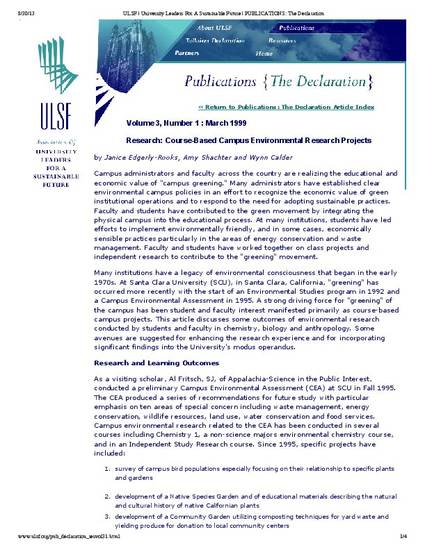
Campus administrators and faculty across the country are realizing the educational and economic value of "campus greening." Many administrators have established clear environmental campus policies in an effort to recognize the economic value of green institutional operations and to respond to the need for adopting sustainable practices. Faculty and students have contributed to the green movement by integrating the physical campus into the educational process. At many institutions, students have led efforts to implement environmentally friendly, and in some cases, economically sensible practices particularly in the areas of energy conservation and waste management. Faculty and students have worked together on class projects and independent research to contribute to the "greening" movement. Many institutions have a legacy of environmental consciousness that began in the early 1970s. At Santa Clara University (SCU), in Santa Clara, California, "greening" has occurred more recently with the start of an Environmental Studies program in 1992 and a Campus Environmental Assessment in 1995. A strong driving force for "greening" of the campus has been student and faculty interest manifested primarily as coursebased campus projects. This article discusses some outcomes of environmental research conducted by students and faculty in chemistry, biology and anthropology. Some avenues are suggested for enhancing the research experience and for incorporating significant findings into the University's modus operandus.
